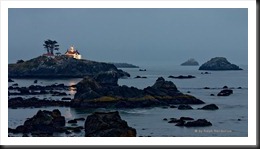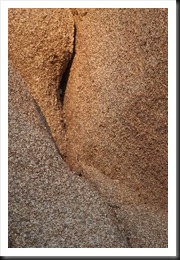Brooks Jensen published a very provocative article in the current issue of Lenswork. He delves into a topic that I’ve thought about ever since I first picked up a digital camera. It relates to the question of whether or not it is OK to manipulate photographs. I’ve always contended that it is not only OK but, at least for the kind of photography I do, it is required. The photographs I create reflect my interpretation of the natural world around us. Therefore, their subjects and contents are going to reflect something of me.
Jensen goes several steps farther by identifying three major types of photography – Documentary, Personal Narrative and Imaginative. Jensen describes Documentary photography as telling “someone else’s story.” What a great way of describing it. Clearly, then, in documentary photography, the photographer strives to be as true to the subject as possible and minimize or eliminate his or her own coloration or bias. The goal is total objectivity.
In the Personal Narrative type of photography the photographer tells his or her own story. In this style of photography the door is open to interpretation and imagination but the content is still grounded in reality. As Jensen states, “to succeed as artwork, they must go beyond the personal and provide us with something that touches on the universal.”
The third type of photography is Imaginative. Jensen describes this as “a photographer creating an entirely new world in the viewer’s imagination.” The world of imagination as it applies to photography can take on many forms from the hyper-real to the symbolic to total fantasy.
Ansel Adams and Edward Weston might be considered to be hyper-real as their wonderful photographs are not faithful depictions of reality but rather go beyond reality to show us more than what is merely real. Their photographs may be believable but recreating them without resorting to manipulation would not be remotely possible.
The symbolic can take us beyond the objective into the world of deeper meaning. These photographs can be the gateway to more universal concepts, values and ideals.
The fantastic looses contact with reality and provides the viewer with the freedom to wander wherever his or her imagination wishes to go. In some ways, the fantastic may not have an anchor in anything we recognize. But when these photographs work they spark the imagination and the viewer can construct his or her own interpretation and reality.
This brief discussion of Jensen’s article just scratches the surface. But I think it provides a good frame of reference to help us better understand our own photography. Personally, I’m prompted to ask myself what my photographs say and what they trigger in the viewer’s mind and imagination.
I’d like to conclude this post by repeating a quote from Minor White.
“One should not only photograph things for what they are but for what else they are.”
We do photography workshops. Come on out and join us. Click here to check us out.
You can also check out our photography. Click here.
(973)



